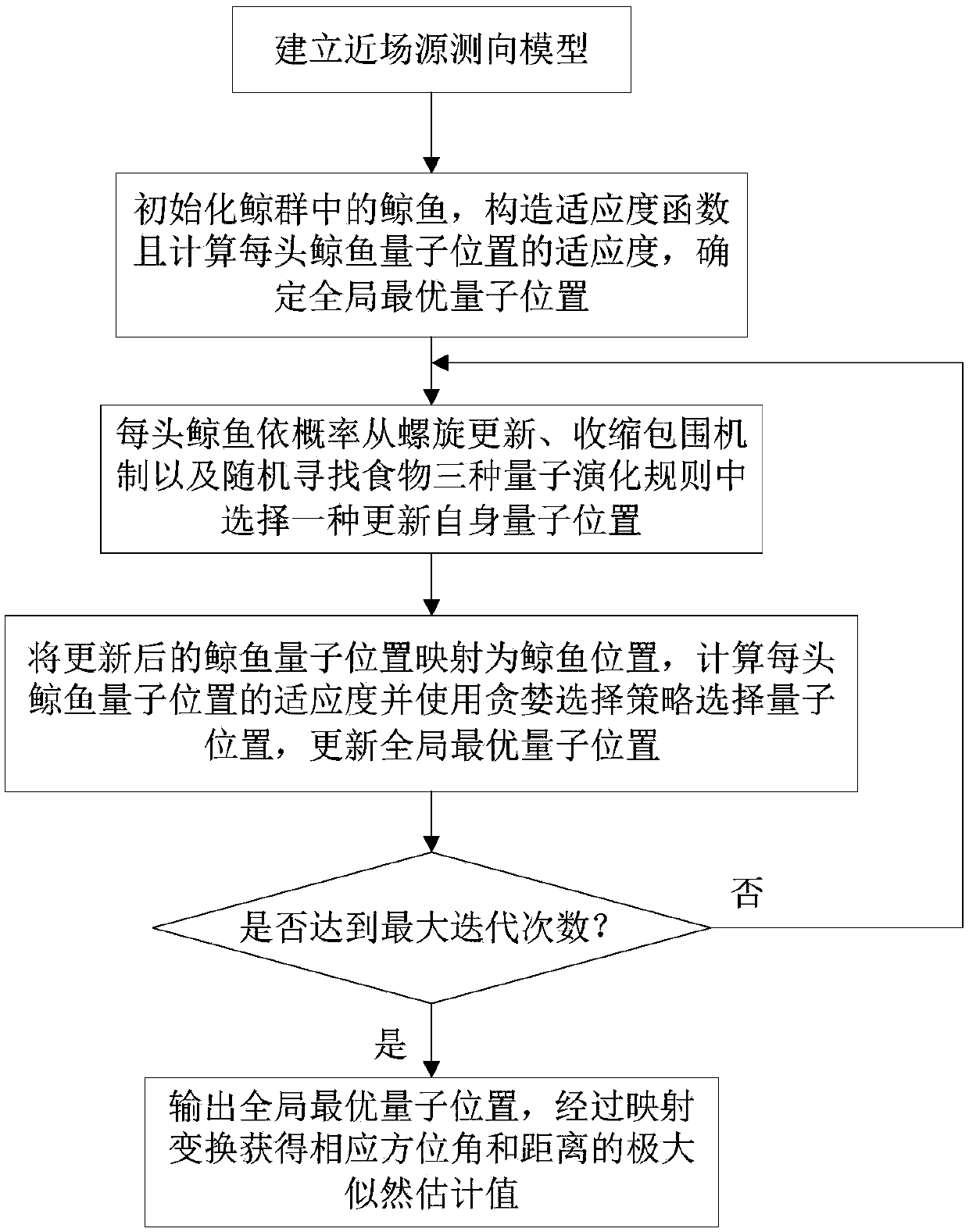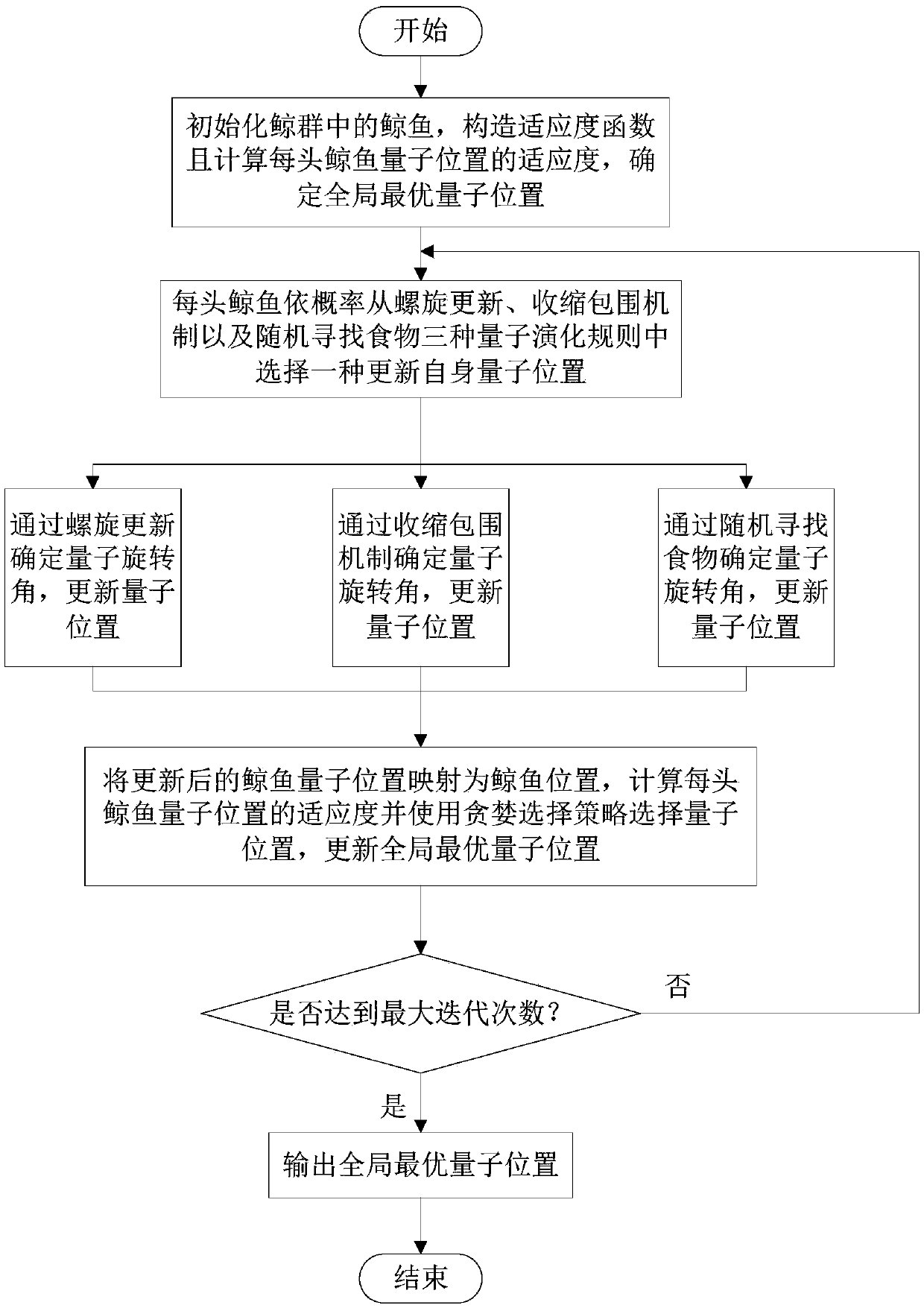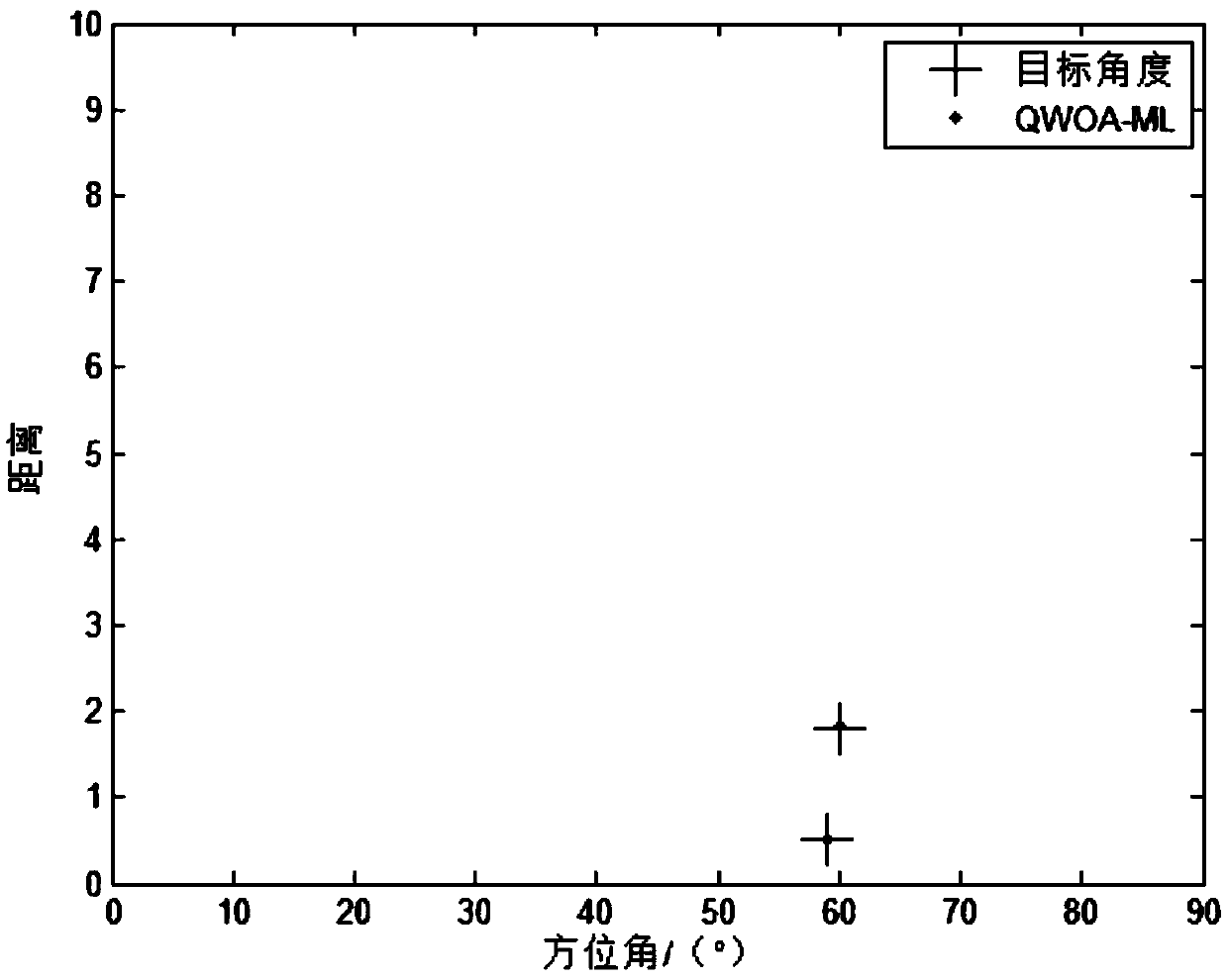Near field source direction finding method based on quantum whale optimization mechanism
A near-field source and quantum technology, applied in direction finders using radio waves, radio wave direction/deviation determination systems, etc., can solve problems such as complex parameter optimization process, incoherent source direction finding, and large amount of calculations
- Summary
- Abstract
- Description
- Claims
- Application Information
AI Technical Summary
Problems solved by technology
Method used
Image
Examples
Embodiment Construction
[0041] The present invention will be further described in detail below in conjunction with the drawings and specific embodiments.
[0042] Combine Figure 1 to Figure 4 The present invention provides a maximum likelihood direction finding method based on the quantum whale optimization mechanism, the steps are as follows:
[0043] Step one is to establish a near-field source direction finding model. The receiving array is composed of (2M+1) isotropic antenna array elements, the distance between the array elements is d, and the array element labeled 0 at the center of the array is used as the phase reference element. Assuming that there are P narrowband signal sources incident on the near field of the array with a spherical wave of wavelength λ, the k-th snapshot data received by the array can be expressed as x(k)=A(θ,l)s(k)+n( k), where x(k)=[x -M (k),x -M+1 (k),...,x M (k)) T Is (2M+1)×1-dimensional array snapshot data vector, where k represents the number of snapshots; A(θ,l)=[a ...
PUM
 Login to View More
Login to View More Abstract
Description
Claims
Application Information
 Login to View More
Login to View More - R&D
- Intellectual Property
- Life Sciences
- Materials
- Tech Scout
- Unparalleled Data Quality
- Higher Quality Content
- 60% Fewer Hallucinations
Browse by: Latest US Patents, China's latest patents, Technical Efficacy Thesaurus, Application Domain, Technology Topic, Popular Technical Reports.
© 2025 PatSnap. All rights reserved.Legal|Privacy policy|Modern Slavery Act Transparency Statement|Sitemap|About US| Contact US: help@patsnap.com



